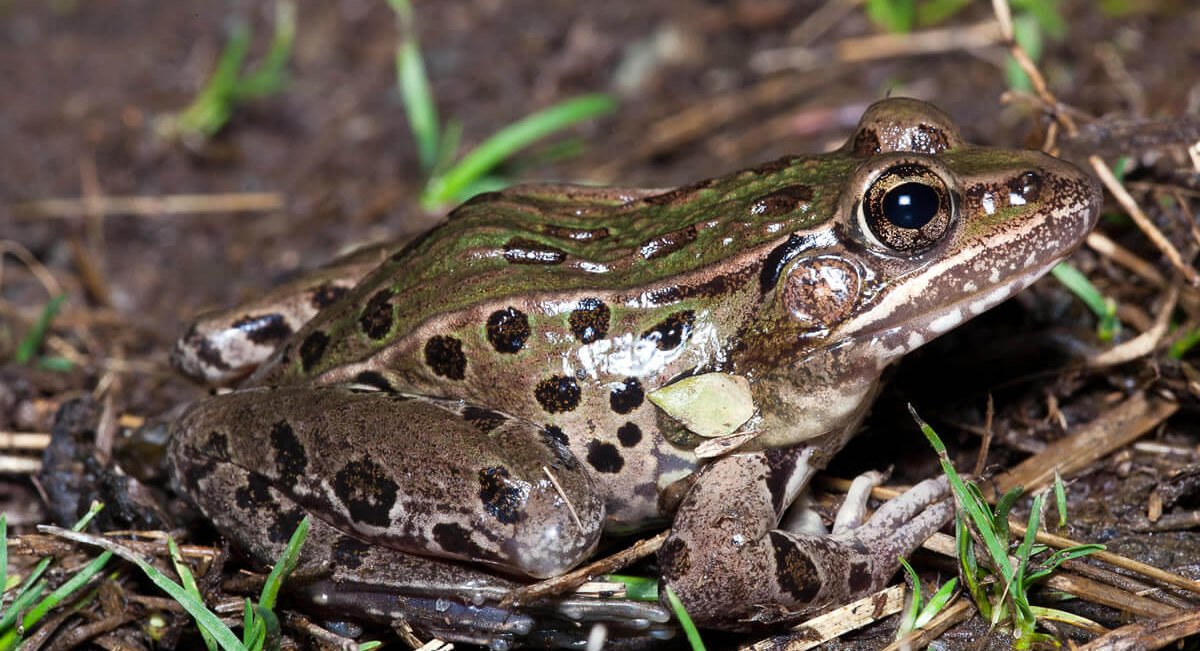New York state environmental officials are planning to update their list of endangered and threatened species as part of a push to protect animals that are at the brink of extinction.
Those include the Atlantic leopard frog, a native of Staten Island that now only lives at six locations across the state. Black-spotted like a leopard, the green-hued frog is one of three animals native to the New York City area that the New York Department of Environmental Conservation is proposing to add to its list of endangered, threatened or special concern species.
The agency released its proposal Aug. 7, and plans to finalize it later this year. It marks the first time in five years that new species will receive protected status in the state.
Animals can fall into one of five conservation categories. The most urgent level is endangered, for a native species that is in imminent risk of becoming extinct, which means the species will no longer exist. If an animal is not at risk of immediate extinction, but has a future risk of becoming endangered, it’s classified as threatened. The lowest level on the list is special concern, which is designated to any animals that warrant closer watch and more data for future consideration.
Getting on the list is a grim privilege that not only acknowledges the Staten Island croaker and dozens of other animals as rarities, but also empowers elected officials to create protections in law.
“It’s long overdue, but we’ll take whatever we can,” said George Jackman, habitat restoration manager at the environmental group Riverkeeper.
Historically, the Atlantic leopard frog was found in 11 counties with more than 100 recorded populations. The bronze-streaked frog is usually found in isolated pockets in densely populated regions such as the Hudson Valley — and historically, Long Island. Currently, the Atlantic leopard frog is only found at six locations within three counties: Orange, Putnam and Richmond.
The black-spotted amphibian lives in clear and shallow water around heavily vegetated wetland areas such as marshes, wet meadows or slow-flowing water.
“They got that Bronx twine to their call that has distinguished them from other species of leopard frog,” Jackman said. “They’re intimately connected with wetlands, which are absolutely critical for the endangered amphibians.”
The American eel species is also proposed as one of special concern after decades at its lowest numbers. The long slimy fish, found in the Hudson River and on Long Island, has dwindled in population to far less than 10% of what it was before the 1970s, when it was a common sight. Dams upstream restrict their habitat range when they are young. When they become adults and swim downstream to mate, they often get chopped up in the turbines of hydropower plants.
“Adult eels are the ones that drive the entire population across the globe,” Holst said. “They’re having a harder time migrating upstream and they often get killed on their way downstream.”
The third species native to the metro area considered for the list is the eastern pirate perch, a voracious five-inch fish once found in 33 water bodies on Long Island. In the last 20 years that has dwindled to 12 locations. The perch lives along the Atlantic coast and can be found in the vegetated calm waters of rivers, ponds, swamps, marshes and oxbows.
The dark brown fish is the only one known to use chemical camouflage to prevent its scent from being detected by potential prey. This clandestine hunter’s fossils date back to about 24 million years ago. It is now being considered for special concern status.
These designations can restrict the “taking” or interfering with an animal as illegal and punishable by fines.
“We define somebody taking the animal as killing it, capturing it, harassing it, disrupting its life in the sense that you can’t move it off of its spawning area or its nesting area and you can’t alter the habitat that it depends on for a critical life function,” said Lisa Holst, a biologist at the state Department of Environmental Conservation. “It’s not only actually outright killing the animal, but also stressing it in terms of making it hard for it to do what it needs to do to live and reproduce in the state.”
Addition to the list activates a series of actions that begins with recognition and includes conservation efforts such as detailed surveys and testing strategies to remove stressors on the population. The end results are regulations such as those restricting the commercial and recreational harvesting of species, which could be a consideration for American eels because one of their stressors is over-harvesting and poaching. Additional funding to remove some of the abandoned dams that restrict eel migration could be another measure officials adopt.
“Federal regulation by Congress ensures the recovery of the species and its critical habitat,” Jackman said. “That means you cannot even touch these species, you can’t harm it, you can’t even look at it cross-eyed without incurring a federal fine, and nor can you disturb its habitat.”
Public comments can be submitted via [email protected] by Oct. 18. The conservation department will hold virtual public hearings on Oct. 10.
